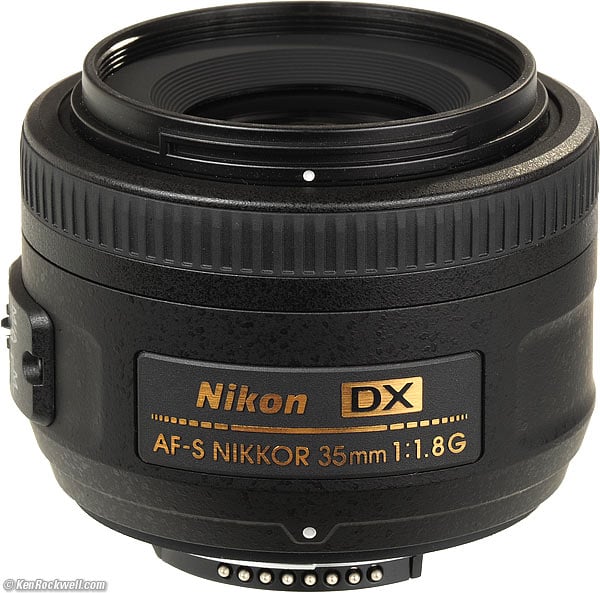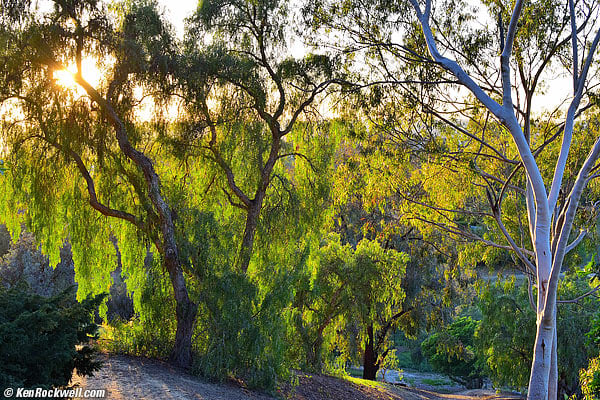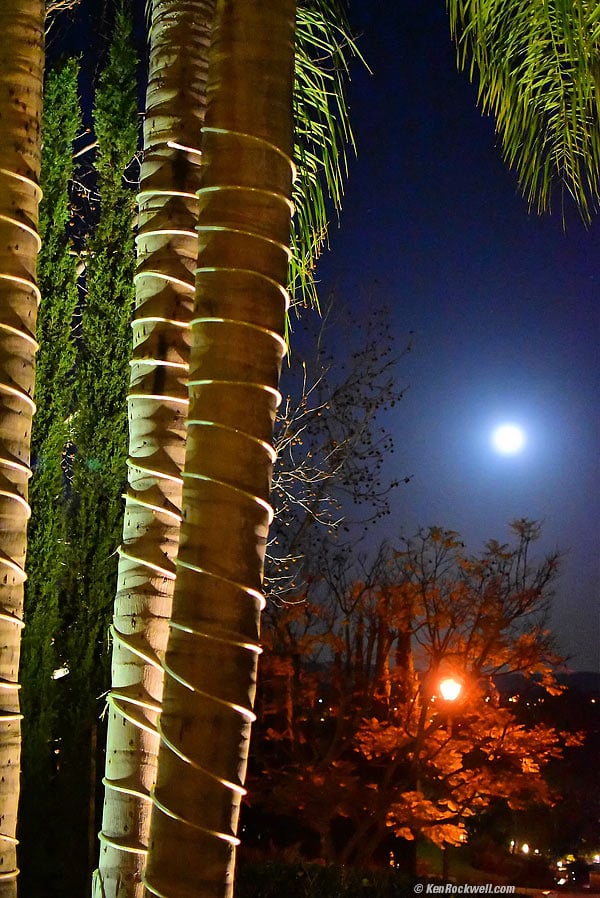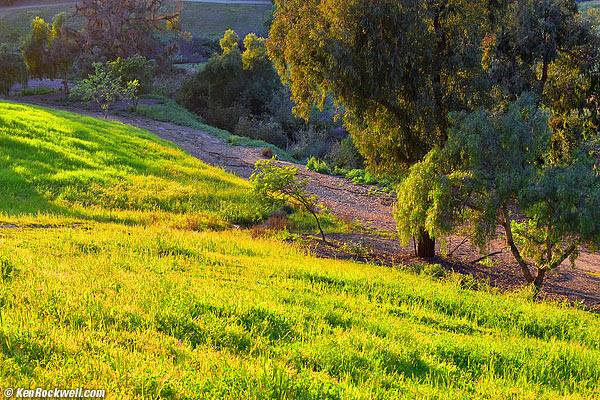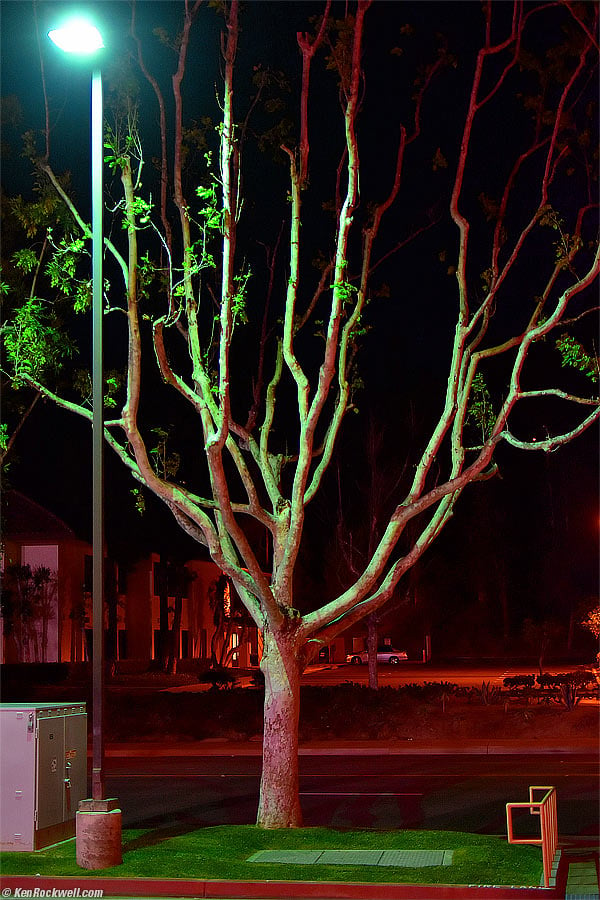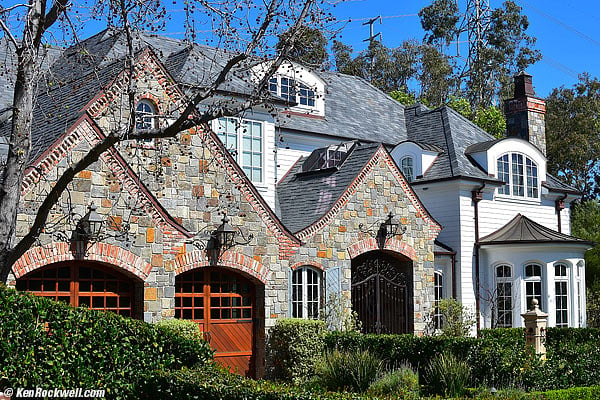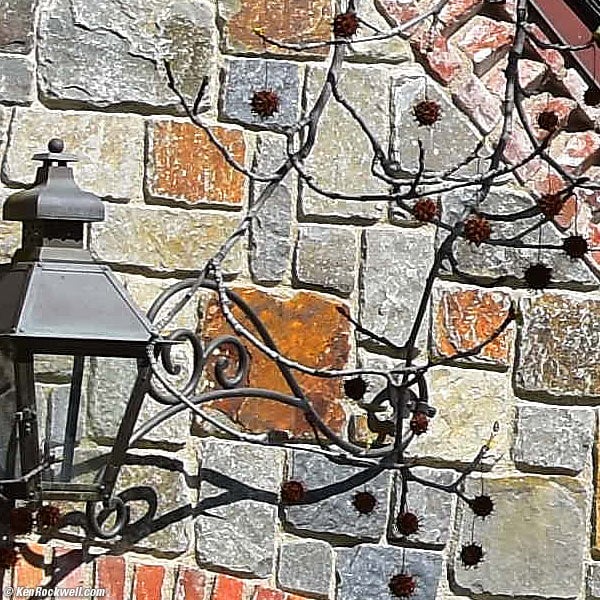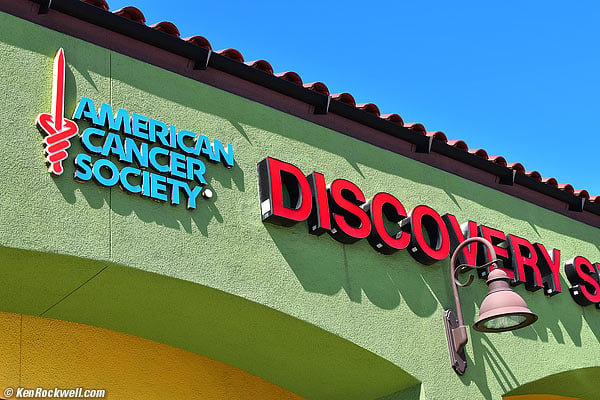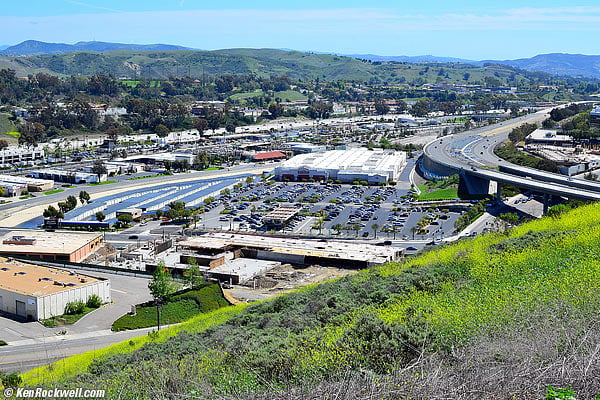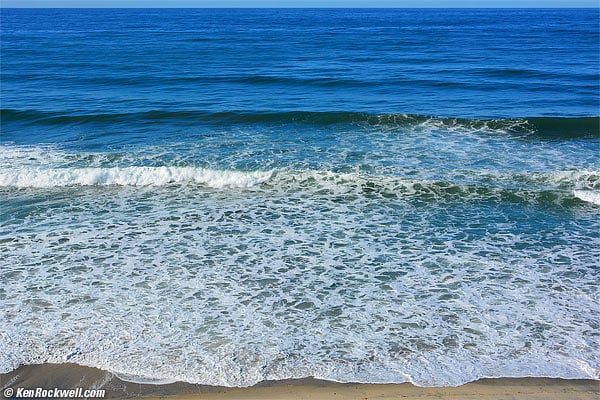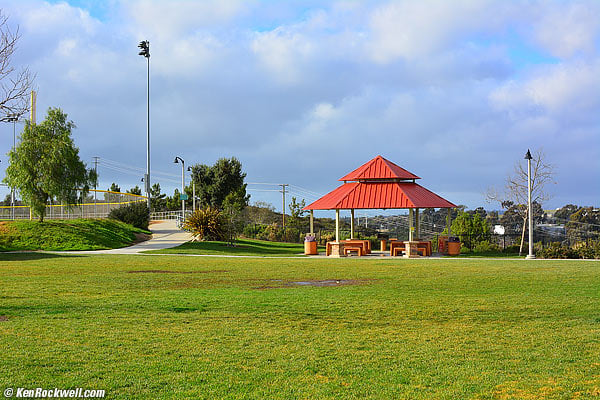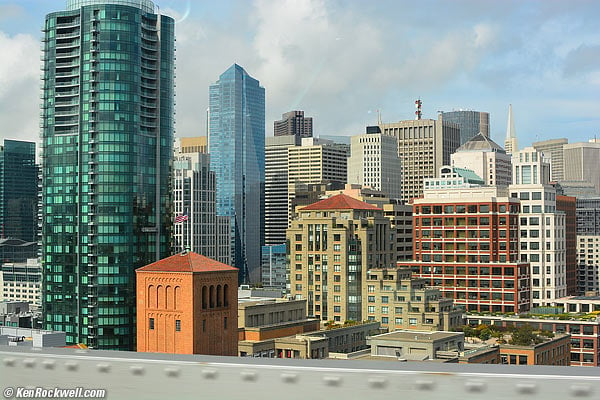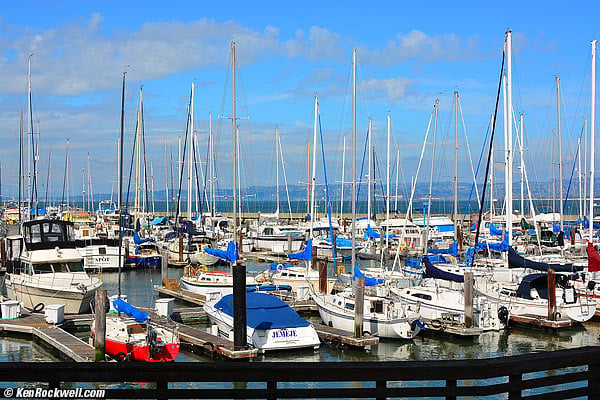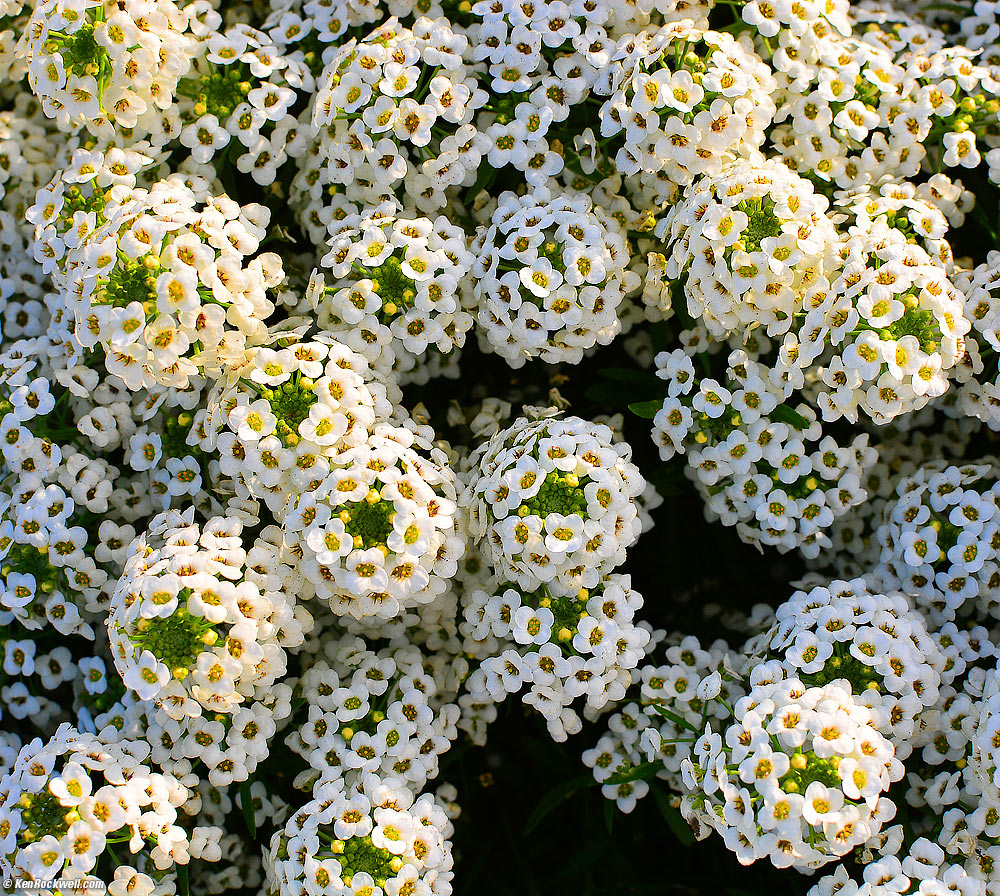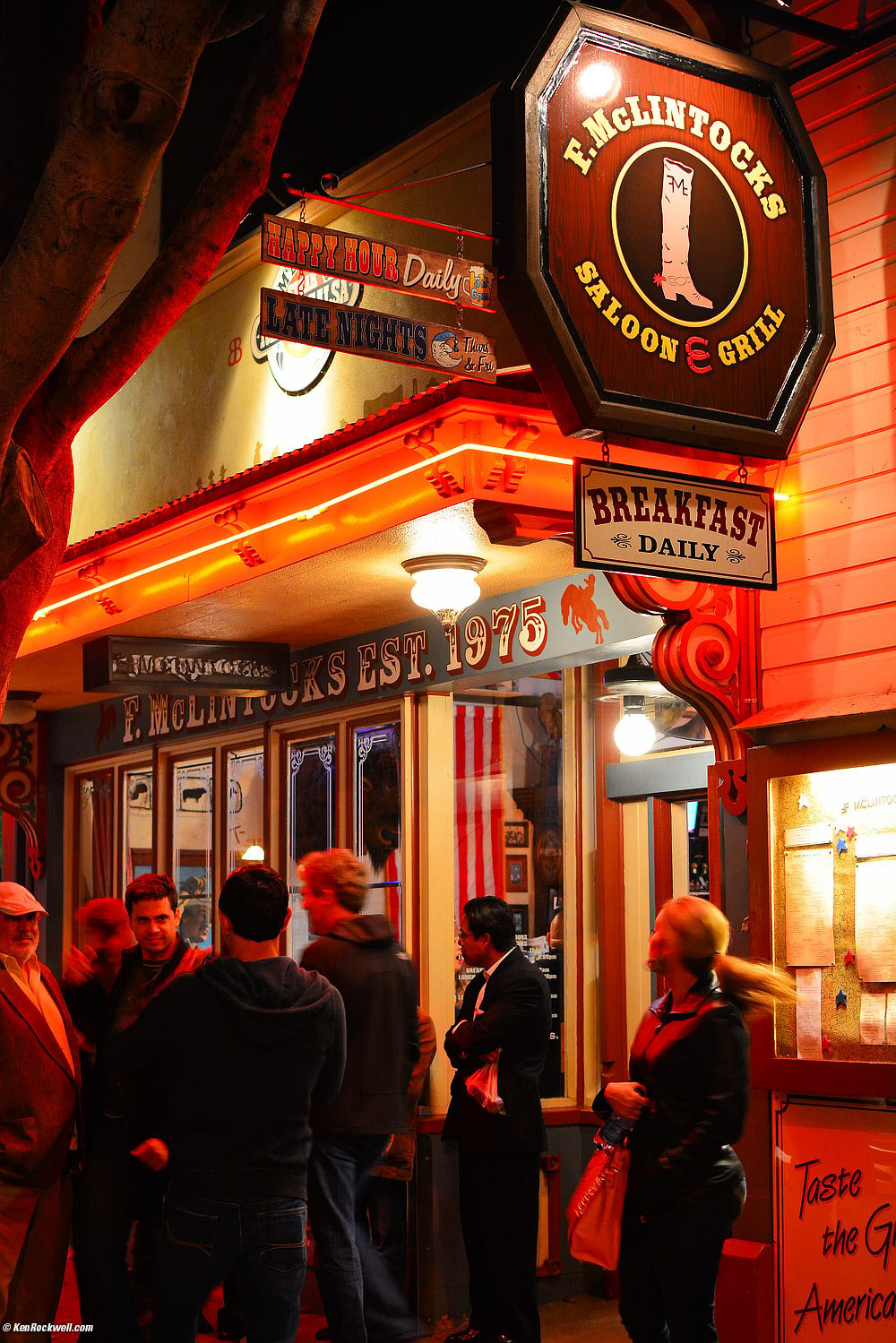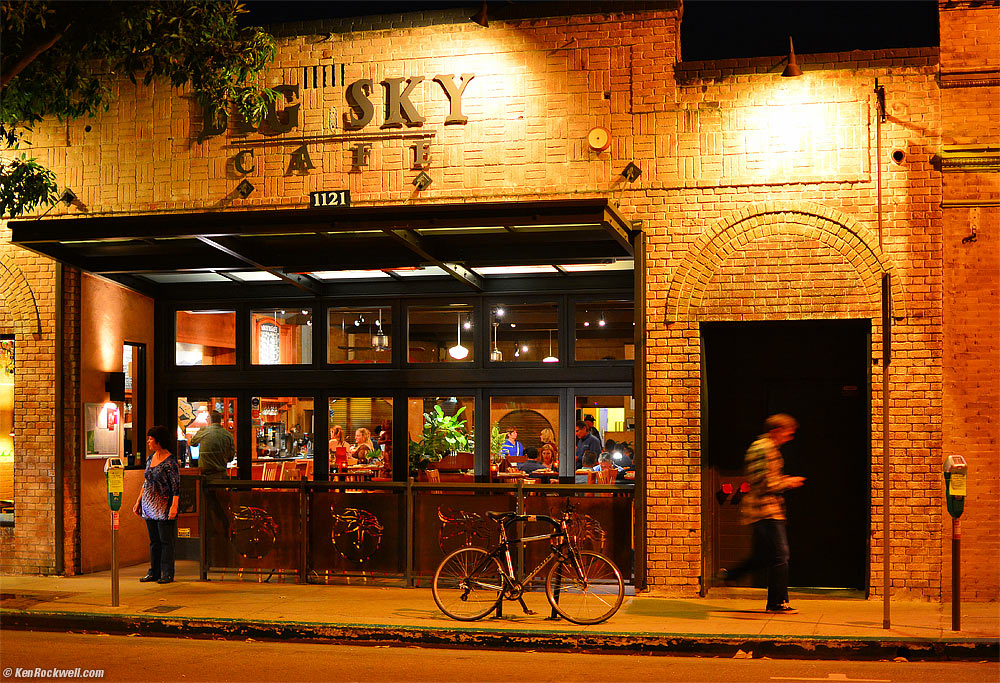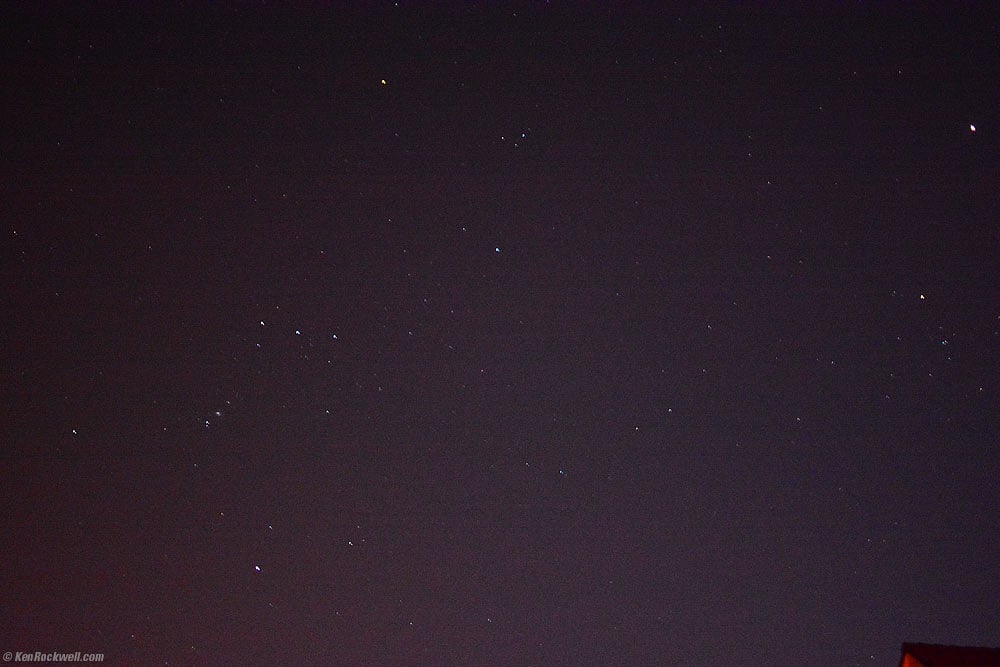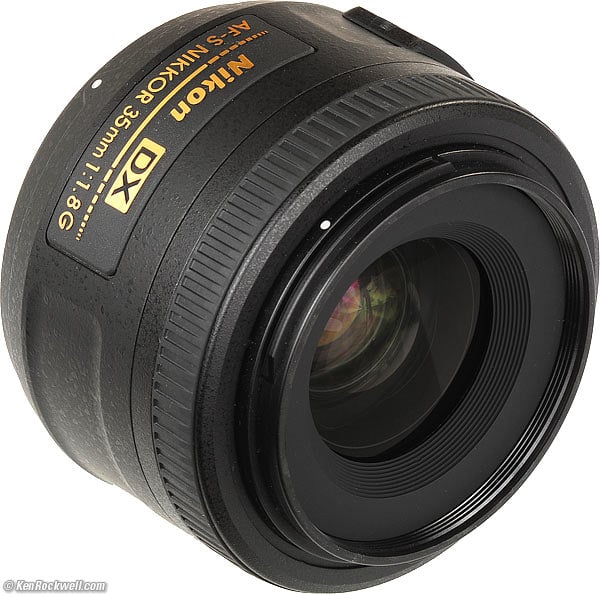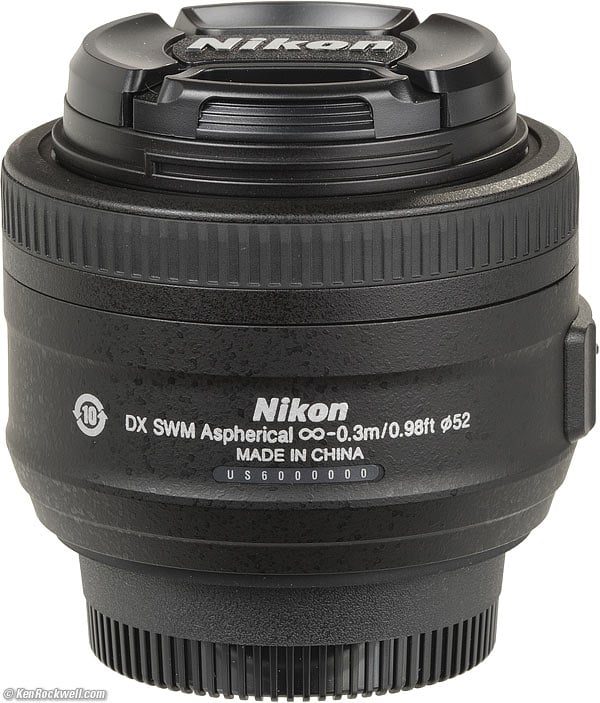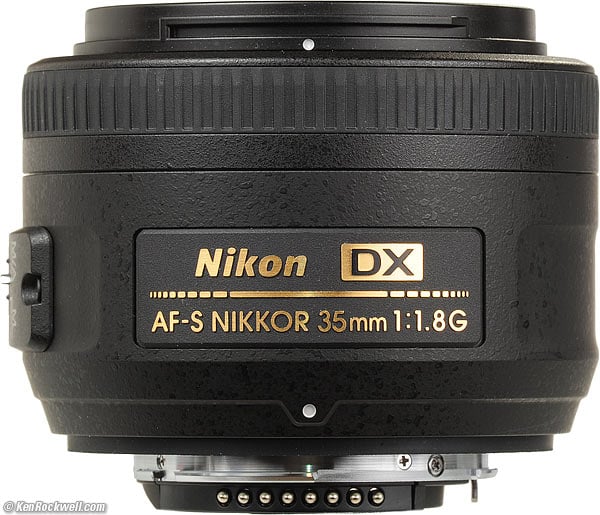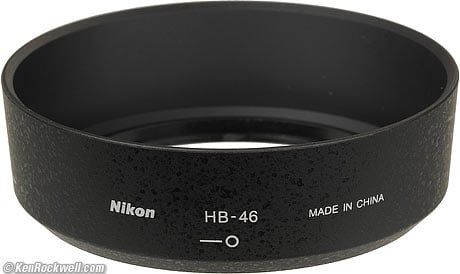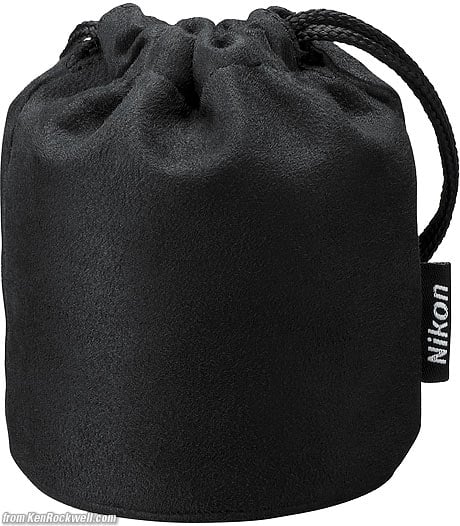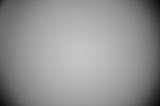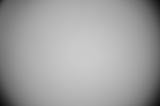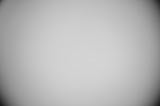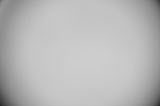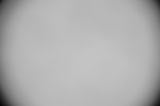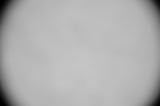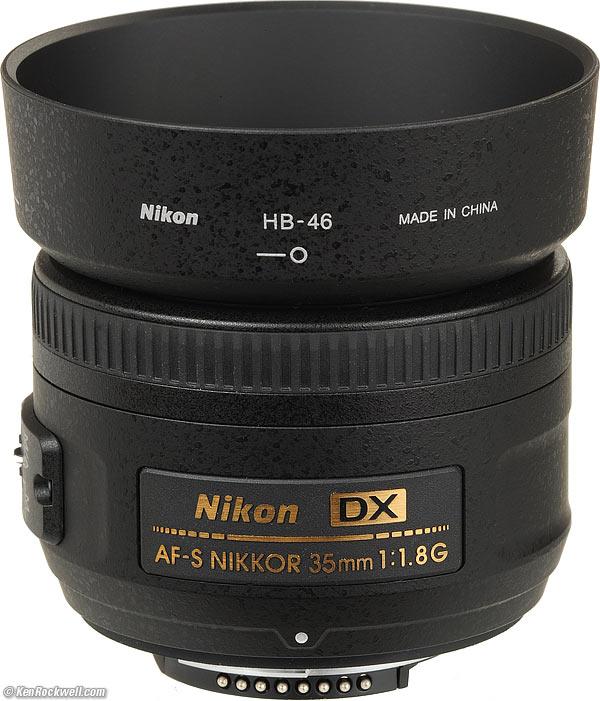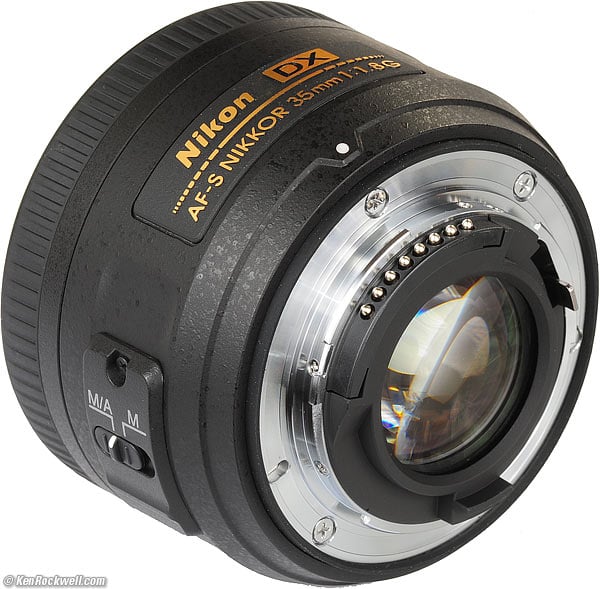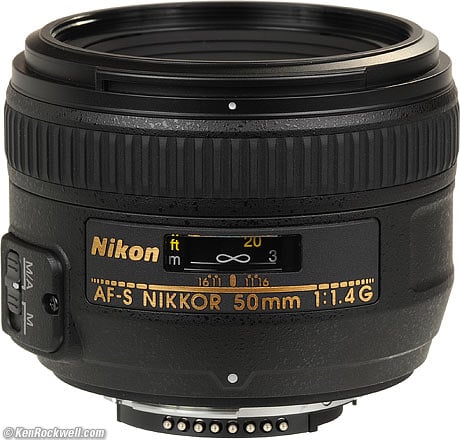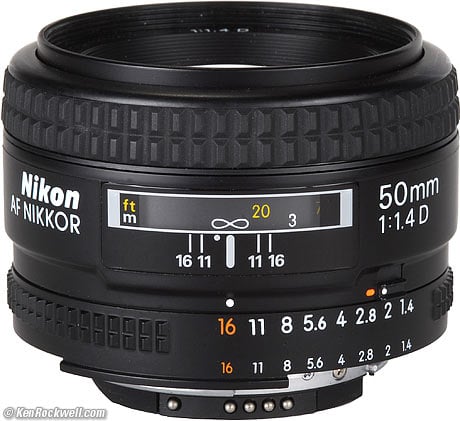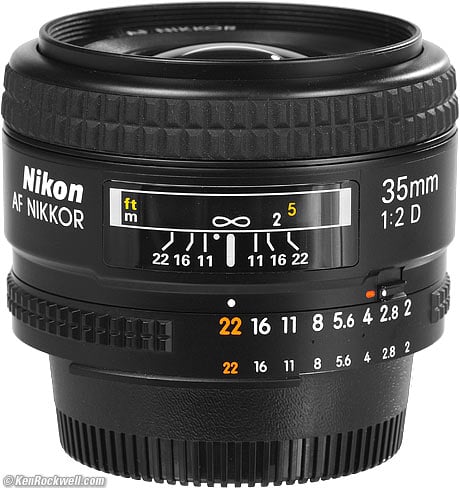Home Donate New Search Gallery Reviews How-To Books Links Workshops About Contact
Nikon 35mm f/1.8 DX
Sample Images Intro Specifications
Performance Compared Recommendations
Nikon 35mm f/1.8G AF-S DX (works well on DX cameras only, 52mm filters, 6.95 oz/197.0g, 1 foot/0.3m close-focus, about $197). bigger. I bought mine from Adorama. You also can get it at Amazon, at B&H and at Crutchfield.
My biggest source of support for this free website is when you use those or any of these links when you get anything, regardless of the country in which you live. It helps me keep adding to this free website when you get your things through these links — but I receive nothing for my efforts if you buy elsewhere. Thanks for your support! Ken.
March 2017 Nikon Reviews Nikon Lenses All Reviews
Nikon 35mm f/1.8 for FX cameras. The DX lens reviewed here only works on DX cameras.
Great for: A fast, light, inexpensive normal lens for Nikon's DX cameras, especially for use in low-light without flash.
Not for: 35mm or FX cameras. For larger DX cameras with built-in autofocus motors like the D50, D80, D90 and D300, getting a 35mm f/2 AF-D instead will also work on FX cameras should you upgrade later.
Sample Image Files top
Sample Images Intro Specifications
Performance Compared Recommendations
As you'll see below, my 35/1.8 has been my favorite lens on each of my DX cameras for many years:
Ryan pets a skink, 12 February 2017. Nikon D5600, Auto White Balance, Picture Control set to Standard with +1 Saturation, Nikon 35mm f/1.8 DX at f/1.8 at 1/125 at Auto ISO 450, Perfectly Clear. bigger or full-resolution file.
Ryan under a Burmese Python at the Reptile Zoo, 12 February 2017. (Nikon D5600, Auto White Balance, Picture Control set to Standard with +1 Saturation, Nikon 35mm f/1.8 DX at f/1.8 at 1/125 at Auto ISO 320, Perfectly Clear.) bigger.
Pepper trees and eucalyptus in backlight, 06 March 2015. D5500, 35/1.8 DX, f/8 at 1/30 hand-held at ISO 100, Perfectly Clear V2. © camera-original file.
Light, shadow and color, looks great!
Moonrise, 06 March 2015. D5500, 35/1.8 DX, f/1.8 at 1/30 hand-held at at ISO 10,000, Perfectly Clear V2. Bigger.
Hand-held astronomical shooting? No problems; ISO 10,000 looks great on DX cameras! Note that at f/1.8 only the green trees on the left are in focus.
Green spring grass in backlight, 06 March 2015. D5500, 35/1.8 DX, f/7.1 at 1/30 hand-held at ISO 100, Perfectly Clear V2. © camera-original file.
It's all about light and color. The foreground comes right up to the bottom of the frame, and is of course out of focus.
Crazy-colored tree at night, 06 March 2015. D5500, 35/1.8 DX, f/1.8 at 1/30 hand-held at ISO 1,000, Perfectly Clear V2. bigger.
With f/1.8, hand-held night shooting is trivial. This is what my iPhone 6 Plus can't do: get brilliant, colorful images shot in the dark without flash. ISO 1,000 is trivial on DX; it's sharp and clean, and with an f/1.8 lens, easy to shoot at night hand-held.
Fine home in Corte Madera, 08 March 2015. D5500, 35/1.8 DX, f/9 at 1/200 at ISO 100, as shot. © camera-original file.
The 35/1.8 is so sharp you can count the nubs on the seed balls on the tree at the left:
Crop from left side of above image. If this is 6" (15 cm) wide on your screen, the entire image printed at this same high magnification would be 40 x 60" (1 x 1.5 meters)!
American Cancer Society Discovery Store, 08 March 2015. D5500, 35/1.8 DX, f/7.1 at 1/200 at ISO 100, as shot. © camera-original file.
35/1.8: Sharp and colorful and well exposed; the images just look great as-shot! These are all shot in JPG BASIC as I shoot everything; with Nikon, there's no need to waste time with shooting raw.
Stone, 21 March 2014. Nikon D5300, Nikon 35mm f/1.8 DX, f/9 at 1/320, ISO 100, VIVID Picture Control. © Camera-original LARGE BASIC JPG file.
Flower, 22 March 2014. Nikon D5300, Nikon 35mm f/1.8 DX, f/8 at 1/125, ISO 100, VIVID Picture Control, +3 Saturation, Perfectly Clear. © Full-resolution file from BASIC LARGE JPG.
Flowers, 22 March 2014. Nikon D5300, Nikon 35mm f/1.8 DX, f/8 at 1/125, ISO 100, VIVID Picture Control, +3 Saturation, Perfectly Clear. © Full-resolution file from BASIC LARGE JPG.
Is it sharp? 30 March 2014. Nikon D5300, Nikon 35mm f/1.8 DX, f/8 at 1/250 at ISO 100, VIVID Picture Control, +3 Saturation. Bigger or © camera-original 24MP BASIC LARGE JPG. It's so sharp that the biggest sharpness limitation is the heat shimmer of the distant view!
Palm, 28 January 2013. D5200, 35mm f/1.8 DX, ISO 100, f/6.3 at 1/160. Camera-original © 24MP LARGE BASIC JPG image file.
Surf, 28 January 2013. D5200, 35mm f/1.8 DX, ISO 100, f/6.3 at 1/160. Camera-original © 24MP LARGE BASIC JPG image file.
Park, 27 January 2013. D5200, 35mm f/1.8 DX, ISO 100, f/8 at 1/250. Camera-original © 24MP LARGE BASIC JPG image file.
San Francisco as shot from the window of a moving car at 60 MPH, March 2013. Nikon D7100, Nikon 35mm f/1.8 DX, AUTO ISO 100, f/8 at 1/250, VIVID Picture Control with +3 Saturation and 7 Sharpening. © Camera-Original LARGE BASIC JPG.
Pier, 28 March 2013. Nikon D7100, Nikon 35mm f/1.8 DX, AUTO ISO 100, f/8 at 1/400, VIVID Picture Control with +3 Saturation and 7 Sharpening. © Camera-Original LARGE BASIC JPG.
Stop Sign, San Luis Obispo, 5:51 PM, 11 April 2013. (2013 Nikon D7100, built-in flash ON, 2009 Nikon 35/1.8 G, f/8 at 1/400 at ISO 100.) bigger. © camera-original MEDIUM BASIC JPG file.
Little Flowers, San Luis Obispo, 6:20 PM, 11 April 2013. (2013 Nikon D7100, 2009 Nikon 35/1.8 G, f/6.3 at 1/100 at ISO 100.) bigger. © camera-original MEDIUM BASIC JPG image.
McLintock's, San Luis Obispo, 8:16 PM, 11 April 2013. (2013 Nikon D7100, 2009 Nikon 35/1.8 G, f/3.2 at 1/15 hand-held, ISO 800.) bigger. © camera-original MEDIUM BASIC JPG file.
Big Sky Cafe, San Luis Obispo, 8:21 PM, 11 April 2013. (2013 Nikon D7100, 2009 Nikon 35/1.8 G, f/3.2 at 1/15 hand-held, ISO 800, Perfectly Clear.) bigger. © camera-original MEDIUM BASIC JPG file.
The constellation Orion as seen from San Luis Obispo, 8:28 PM, 11 April 2013. (2013 Nikon D7100, 2009 Nikon 35/1.8 G, f/1.8 at 1/5 second, hand-held freehand, ISO 6,400.) bigger.
Katie Rockwell. enlarge. Shot with a Nikon D40, this 35mm f/1.8, Program mode chose 1/125 at f/1.8, Auto ISO chose ISO 500.
More example photos, 18 March 2009.
Introduction top
Sample Images Intro Specifications
Performance Compared Recommendations
|
|
The Nikon 35mm f/1.8 DX is Nikon's best fixed normal lens for DX cameras.
It is especially wonderful for shooting anything hand-held in available light.
The 35mm f/1.8 DX doesn't work well or at all on 35mm or FX cameras, but it does autofocus perfectly with every Nikon, especially the least expensive DX cameras.
For $199.95, this lens is a must-have for anyone shooting a DX camera in available light and who doesn't already have a fast 50mm lens. It's a no-brainer for low-light.
It focuses by moving only the rear elements, so the filter mount and front elements don't move at all.
It is unique among lenses because nothing moves in or out externally as it operates. Unlike every other Nikon 35mm, 50mm and zoom lens, nothing moves, so there is nothing sucking air in and out from the outside world as it focuses or zooms. (Of course it doesn't zoom, but every zoom pumps air in and out as you zoom.)
This is a normal to slightly longer than normal lens on DX, seeing about the same angle of view as a 53mm lens sees on FX or 35mm film. (see crop factor.)
The 35/1.8 DX is especially great for use on Nikon's lightest DSLRs because of its small size, low weight and AF-S auto focusing which works on even Nikon's cheapest D40, D40X and D60 cameras. You can get manual focusing at any time simply by grabbing the focus ring: no switches are required.
If you plan to move to FX or film any time in the next several years, consider a lens which will also cover FX, like the 35mm f/2 AF-D ($360), 28mm f/1.4D ($4,000) or 50mm f/1.8D ($130), which won't autofocus on the D40, D40X or D60, but will work perfectly on better DX cameras today as well as FX and film cameras.
The advantage of this new 35mm f/1.8 is that it autofocuses on the D40, D40X and D60, and that it allows instant manual-focus override simply by grabbing the focus ring.
For $200 you can't go wrong, especially since it has a metal mount and an ass-gasket to keep out dust. (Whoopee-do, the 50mm f/1.8D sells for half as much and has a metal mount, too.)
Nikon 35mm f/1.8G AF-S. enlarge.
Everything works perfectly on every DX digital Nikon, and especially on Nikon's cheapest digital D40, D40x and D60.
It doesn't work on FX or film cameras: the corners are cut off.
See Nikon Lens Compatibility for details with your camera. Read down the "AF-S, AF-I," "G" and "VR" columns for this lens. You'll get the least of all the features displayed in all columns, since "G" (gelding) is a handicap which removes features.
Nikon introduced a 35mm f/1.8 lens in 1956 for their now obsolete rangefinder cameras. The original 35mm f/1.8 was made though about 1964.
It is completely unrelated to this lens.
Nikon has made many 35mm f/2 lenses over the years for full-frame FX and film cameras.
Specifications top
Intro Specifications Performance Compared Recommendations
Bottom, Nikon 35 1.8. enlarge.
Nikon calls this the AF-S DX NIKKOR 35mm f/1.8G
AF-S and SWM: Silent Wave (focus) Motor.
DX: Won't work well on film or FX cameras.
G: Gelded for cost-reduction and removing compatibility with older cameras.
35mm, which on a DX camera will see an angle-of view similar to what a 53mm lens would see on film or on an FX camera.
8 elements in 6 groups.
One element is hybrid aspherical, which means a spherical glass element to which an aspherical plastic corrector film has been glued.
It's multicoated, which Nikon calls Nikon Super-Integrated Coating (SIC).
All of this means that this is one heck of a fantastic lens technically.
7 rounded blades.
Stops down to f/22.
Nikon 35mm f/1.8. enlarge.
No.
1 foot (0.3m).
Maximum Reproduction Ratio specs top
Hard Infinity Focus Stop? specs top
No.
Focus Distance Scale? specs top
No.
Depth-of-Field Scale? specs top
No.
Infra-Red Focus Index? specs top
No.
52mm, plastic.
Does not rotate.
Metal, yay!
Rear Gasket (rear moisture seal) specs top
Yes.
It comes with a real rear cap and the good front cap. These could set you back another $25 if they didn't come included.
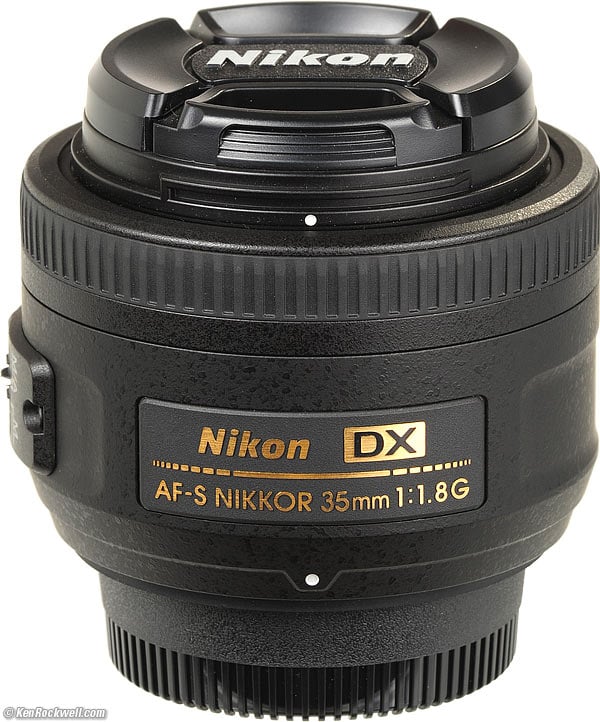
Nikon 35mm f/1.8 with included caps.
HB-46 bayonet plastic hood, included.
Nikon HB-46 Plastic Hood. enlarge.
CL-0913 pouch, included.
Nikon CL-0913 Pouch. enlarge.
Nikon specifies 2.1" (52.5mm) extension from flange by 2.8" (70mm) diameter.
Naked lens: 6.950 oz. (197.0g), measured.
Lens with HB-46 hood: 7.545 oz. (213.9g), measured.
Nikon specifies 7.2 oz. (205g).
This is the same weight as the current 35mm f/2 AF-D (205g).
This is heavier than the 50mm f/1.8 D (155g), 50mm f/1.8 E (145g), and not much lighter than the 50mm f/1.4 AF-D (230g), reference 50mm f/1.4 AI-s (250g) and newest 50mm f/1.4 AF-S (280g).
|
Adorama pays top dollar for your used gear. I use these stores. I can't vouch for ads below.
|
09 February 2009.
March 2009.
The first shipments to customers (that's us) from dealers started on 11 March 2009, as promised.
$197, March 2015 ~ February 2017.
$200, December 2012 - April 2014.
$190, June 2011.
$290, April 2011.
$199.95 USA, February 2009 - March 2011.
Nikon Product Number specs top
2183.
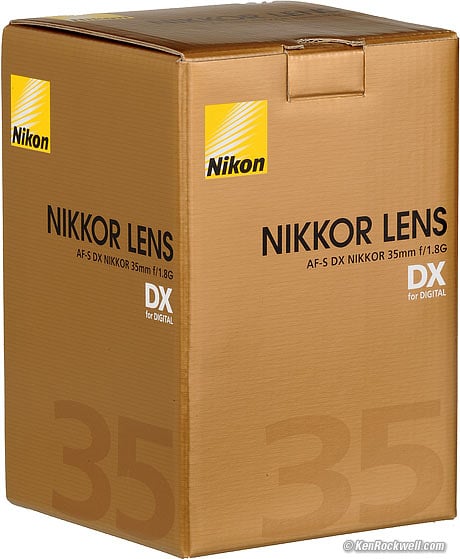
Gold Box.
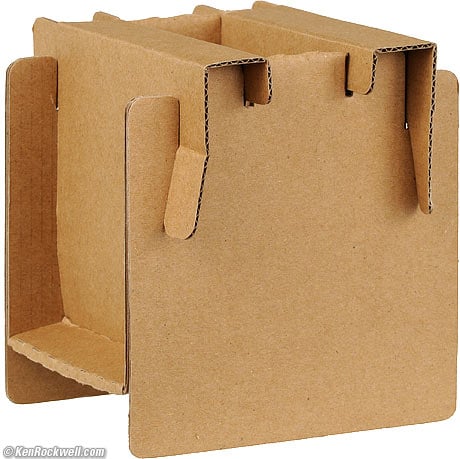
Corrugami inside. I miss the foam.
Performance top
Sample Images Intro Specifications
Performance Compared Recommendations
Overall Focus Bokeh Distortion Ergonomics Falloff
Filters Hood Lateral Color Fringes Macro Mechanics
Survivability Sharpness Spherochromatism
Overall Performance top
The 35mm f/1.8 AF-S is great.
It's so sharp it easily can excite aliases, it focuses fast and accurately, and does everything well.
All lenses should be this good at this low a price.
Focus Performance top
AF Speed
AF speed is the same as every other mid-line Nikon lens. There are no surprises here.
AF Accuracy
AF is always dead on with my D40.
Manual Focus
Manual focus is easy: just move the focus ring at any time.
M/A - M Switch
Nikon goofed. This switch is supposed to be labeled "A - M."
The "M/A" position means autofocus. It's called "M/A" because back in the old days, when Nikon had almost caught up to Canon who had been doing this for ten years before, Nikon was trying to show off that you could focus manually while in the AF position.
Paint over the extra M if you're easily confused.
Bokeh Performance top
Ryan Coloring, March 2009. enlarge. D40, f/2.2 at 1/60, ISO 200.
Bokeh is the character of out of focus areas, not simply how far out of focus they are.
The 35mm f/1.8 lens has fair to poor bokeh, presuming you can get anything in the background out of focus.
Backgrounds go out of focus, but not in the best possible way. You can see that points of light in the background have shifted towards being circles as opposed to even discs, but they usually aren't annoying.
Ryan shopping for bad bokeh at f/1.8. enlarge.
This is a worst-case example. I've never seen it this bad, and this is an out take. The good shot with a good expression I took from this sequence doesn't show this.
See also Spherochromatism below.
Distortion Performance top
The 35mm f/1.8 AF-S has a lot of barrel (bulging) distortion. That's too bad; Nikon could have done a better job here. My Canon SD880 pocket camera has half the distortion of this SLR lens; this lens has about as much distortion as a typical pocket camera at its widest setting.
This can be corrected for critical use by plugging these figures into Photoshop CS2's lens distortion filter. These aren't facts or specifications, they are the results of my research that requires hours of photography and calculations on the resulting data.
FX and Film (not recommended) |
||
∞ |
+2.5 |
tbd |
10' (3m) |
+2.0 |
+4.0 |
3' (1m) |
+2.5 |
tbd |
1' (0.3m) |
+3.0 |
tbd |
© 2009 KenRockwell.com. All rights reserved.
Ergonomics (handling and ease-of-use) Performance top
Great!
This lens handles perfectly.
So long as you don't expect depth-of-field or focus scales, everything works great.
Nothing moves on the outside of the lens, except the focus ring, and only then if you move it yourself. All the focusing and everything happens inside the lens, which also makes this a great lens for dust sealing.
Of course if you're doing careful landscape photography you need a focus and depth-of-field scale, but with all the confusion involved in using digital cameras, Nikon figures we'll not have any time time left over after setting all our menus to concentrate on anything actually related to photography, like getting everything in focus.
Falloff (darkened corners) Performance top
Falloff is invisible on DX.
I've exaggerated this by shooting a gray field and placing these on a gray background. This is completely invisible in actual photos.
Nikon 35mm f/1.8 AF-S falloff on DX.
© 2009 KenRockwell.com. All rights reserved.
|
Falloff on FX is severe, because this lens doesn't cover FX or film.
Just because we're all curious, here's what happens:
Nikon 35mm f/1.8 AF-S falloff on FX (full-frame).
© 2009 KenRockwell.com. All rights reserved.
|
It gets worse as we stop down, because the line between image and darkness sharpens, making the limited coverage of this lens more obvious.
The limitation is the rear element. Neither the hood nor filter cause any problem here.
Filters, Use with Performance top
There is no problem with vignetting, even with combinations of thick filters. 52mm is actually much bigger than needed, and thankfully Nikon has had the common sense to standardize on 52mm filters, even if smaller ones would do, ever since 1959.
The filter ring never rotates or moves.
Hood Performance top
Nikon 35mm f/1.8 with HB-46 plastic hood. enlarge.
The plastic Chinese hood is included.
It works well, but doesn't block off as much as it could. Even misusing this lens on full-frame; the hood still cuts off less light than it should.
Lateral Color Fringes Performance top
There are lateral color fringes when used on the D40, which as a Gen 1 camera, can't correct for them.
Used on Gen 2 cameras, like the D300, there are no color fringes at all.
If you worry about this, they are easy to see on a D40, and completely invisible on the D90 and D300.
Macro Performance top
The 35 1.8 focuses to 1 foot, which is better than most lenses, but not as good as the 18-55mm kit lens.
Here's how close it gets on a DX camera:
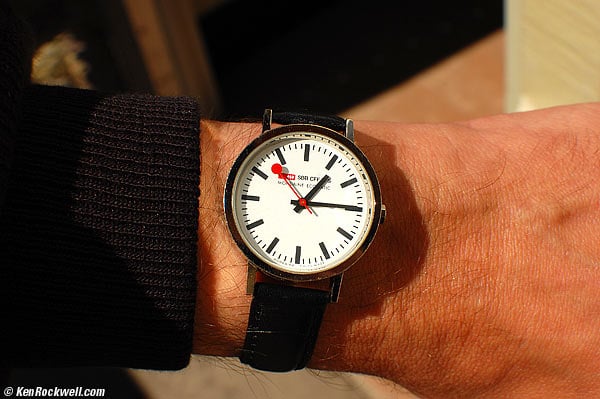
Full image at 1 foot (0.3m).
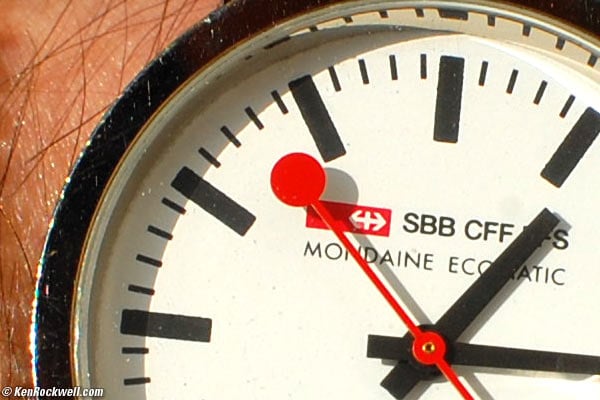
A crop from an image at 100% (a 20 x 30" print), as shot on a D40.
It doesn't get that close, but it stays very sharp. This shot was made at f/13 and ISO 200 on a D40.
Mechanics and Construction Performance top
Nikon 35/1.8. enlarge.
This is a decent lens. It's not professional, but it's not all plastic, either.
Barrel Exterior: Plastic.
Filter Threads: Plastic.
Hood: Plastic bayonet.
Focus Ring: Plastic; rubber covered.
Focus Helicoids: Feel like plastic.
Depth-of-Field Scale: None.
Internals: Plastic with some metal.
Aperture Ring: None.
Mount: Dull-chromed brass.
Markings: Paint.
Identity Plate: Seems like plastic made to look like debossed and planed metal.
Serial Number: Printed on a sticker on the bottom of the barrel.
Ass-Gasket (dust seal at mount): Yes.
Noises When Shaken: Very little; this is one of the tightest lenses I've heard from Nikon in a long time. Since it's not a zoom, there is very little shaking around inside.
Made in: Communist (Red) China.
Sharpness Performance top
Warning 1: Image sharpness depends more on you than your lens.
Warning 2: Lens sharpness doesn't mean much to good photographers.
With those caveats, the 35mm f/1.8 AF-S is very sharp lens, even wide-open.
Here's what I see as tested at infinity on a 12MP D300:
At f/1.8: Great all over. Not quite as sharp or contrasty as smaller apertures, and a little less contrasty in the corners, but you'd never notice anything wrong unless you did split-screen comparisons as I do of the same shot at other apertures.
It's sharp at f/1.8; the key issue is that contrast is a little less than at smaller apertures like f/2.8.
At f/2: A tiny bit better.
At f/2.8: Much sharper than f/2; it doesn't get much better than at f/2.8, which says that this is a very good lens!
At f/4: A tiny bit better than f2.8, but not much.
At f/5.6: Optimum aperture, but not much better than at f/2.8 or f/4. This is a very good lens.
At f/8 and smaller: Diffraction limits performance.
Spherochromatism Performance top
At f/1.8, there is a little spherochromatism.
This means that outlines of out-of-focus highlights are slightly tinged with green in the background, and with magenta if you have anything out of focus in the foreground.
Survivability Performance top
Mechanical
The 35mm f/1.8 is tougher than most lenses because the front filter ring is connected directly to the barrel, not the focusing group.
In other words, if you bang the hood or front of most lenses against a wall, you're lucky if you don't tweak the alignment or screw up the focus mechanism.
With this lens, all you're doing is banging the outer barrel, not the delicate inner workings.
Chemical and Biological
Unlike zooms or most fixed lenses, nothing moves externally, so there is very little air sucked in or out of the lens as it's used.
I suspect this lens will stay cleaner internally, and suck less dust into digital cameras over years of use, than older and more conventional Nikon and Canon lenses.
Compared top
Sample Images Intro Specifications
Performance Compared Recommendations
Compared to the 50mm f/1.4 AF-S
The $500 50mm f/1.4 AF-S is the same thing, just bigger, and 2.5 times more expensive. It adds a focus-distance scale, but that's it.
The 50mm also works on film and FX, as well as being 2/3 of a stop faster.
On DX, the 50mm lens becomes a short tele or portrait lens, while the 35mm is a normal lens on DX.
Compared to the 50mm f/1.4 AF-D compared top
The older 50mm f/1.4 AF-D (1986-2008) is optically excellent, but uses the old mechanical AF system, so it won't autofocus on the D40, D40X or D60.
When it does AF on fancier cameras, the focus ring moves and you have to keep your hands off it.
Compared to the 35mm f/2 AF-D compared top
The Nikon 35mm f/2 AF-D was introduced 20 years ago in 1989, and is still sold today.
It uses the old mechanical AF system. It won't autofocus on the D40, D40X or D60.
When it does autofocus, as it will on the F6, D50, D70, D80, D90 and etc., the focus ring turns and you have to keep your hands off of it.
If you're counting pixels, the 35/2D is not as sharp as the new 35mm f/1.8G, but it does cover film and FX if you plan to upgrade.
I'd pass on the 35/2 unless you're shooting film or FX today. For DX, the $199 35/1.8G is so good I'd not wish the clunky mechanical focus of the 35/2 on you if you're shooting DX and could use the 35/1.8G.
Recommendations top
Sample Images Intro Specifications
Performance Compared Recommendations
This is a wonderful lens, and for only $200, every DX shooter deserves one of these.
This could be the only lens you ever need for a DX camera.
FX shooters deserve either the 50mm f/1.8 D or, ideally the 50mm f/1.4 AF-S. It makes no sense to get this lens to shoot at the DX setting of an FX camera; just get an FX lens.
This lens is Nikon's commemoration of the 100th anniversary of Henri Cartier-Bresson's birth. If Henri Cartier-Bresson were starting today, he'd have a D40, one of these lenses, and that's it.
Forget Leica for use in dim light: a Nikon D40 at ISO 1,600 is at least as clean as film at ISO 400, giving a D40 at least a two-stop advantage. That means this f/1.8 lens on a D40 gathers at least as much light at ISO 1,600 as a 50mm f/0.90 lens would on ISO 400 35mm film with about the same noise or less, and not even Leica makes an f/0.90 lens. If you have ten grand, Leica does make a slower f/0.95 lens would be a fair compromise, except that there is nothing in focus at f/0.95 due to the nonexistent depth of field. A 35mm lens at f/1.8 has much more depth-of-field.
Ignore some of the press information which claimed that this 35mm f/1.8 is the fastest DX lens; its not (any FX f/1.4 or f/1.2 lens is faster and also covers DX), nor is it the first single-focal-length DX lens: that's the 10.5mm DX fisheye which came out in 2003.
The only reason not to get one of these 35mm f/1.8 DX lenses is if you plan to upgrade to FX and if you already have a DX camera with a built-in focus motor, like the D50, D70, D80 or better. If you do, the older 35mm f/2 AF-D will autofocus on your camera today and do the same thing as this new 35mm f/1.8 DX, and the 35mm f/2 AF-D will also work great on film and FX cameras when you do upgrade.
That caveat aside, this 35mm f/1.8 has better optical and ergonomic performance than the older 35mm f/2 AF-D.
I bought mine from Adorama. You also can get it at Amazon, at B&H and at Crutchfield.
Deployment
The hood doesn't get in the way. I'd use it.
I'd leave either a 52mm Nikon Clear (NC - UV) filter, or a 52mm Hoya Super HMC UV on the lens at all times.
If I was working in nasty, dirty areas, I'd forget the cap, and use an uncoated 52mm Tiffen UV filter instead. Uncoated filters are much easier to clean, but more prone to ghosting, and the laminated Tiffens stay together in one piece even after they've been shattered.
Since the lens doesn't pump in or out externally, if you put a filter on it, it's probably the best lens to take to dusty or sandy areas, since it's least likely to suck anything in as you use it.
By comparison, every zoom lens and al the other 35mm and 50mm AF and MF lenses have to suck air in and out as they focus and zoom.
More Information
Nikon's product data with MTF charts
Help me help you top
I support my growing family through this website, as crazy as it might seem.
The biggest help is when you use any of these links to approved sources when you get anything, regardless of the country in which you live. It costs you nothing, and is this site's, and thus my family's, biggest source of support. These places have the best prices and service, which is why I've used them since before this website existed. I recommend them all personally.
If you find this page as helpful as a book you might have had to buy or a workshop you may have had to take, feel free to help me continue helping everyone.
If you've gotten your gear through one of my links or helped otherwise, you're family. It's great people like you who allow me to keep adding to this site full-time. Thanks!
If you haven't helped yet, please do, and consider helping me with a gift of $5.00.
As this page is copyrighted and formally registered, it is unlawful to make copies, especially in the form of printouts for personal use. If you wish to make a printout for personal use, you are granted one-time permission only if you PayPal me $5.00 per printout or part thereof. Thank you!
Thanks for reading!
Mr. & Mrs. Ken Rockwell, Ryan and Katie.
Home Donate New Search Gallery Reviews How-To Books Links Workshops About Contact

